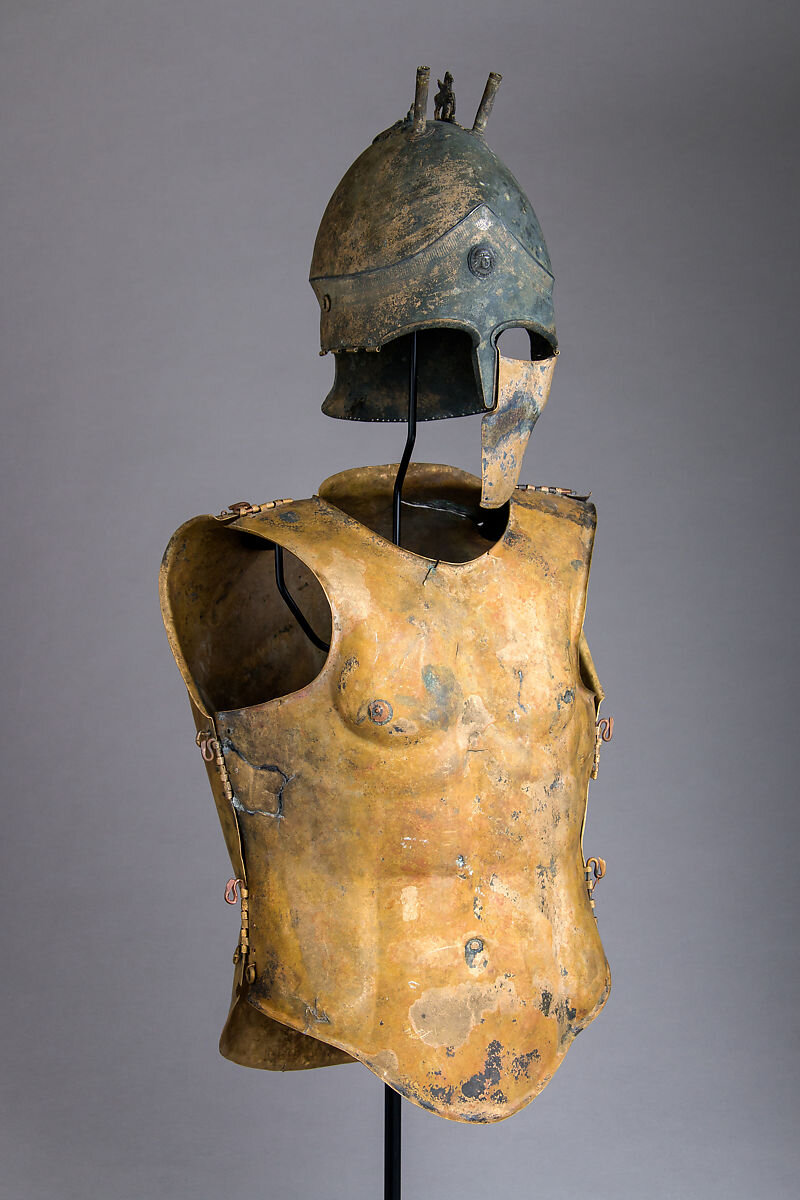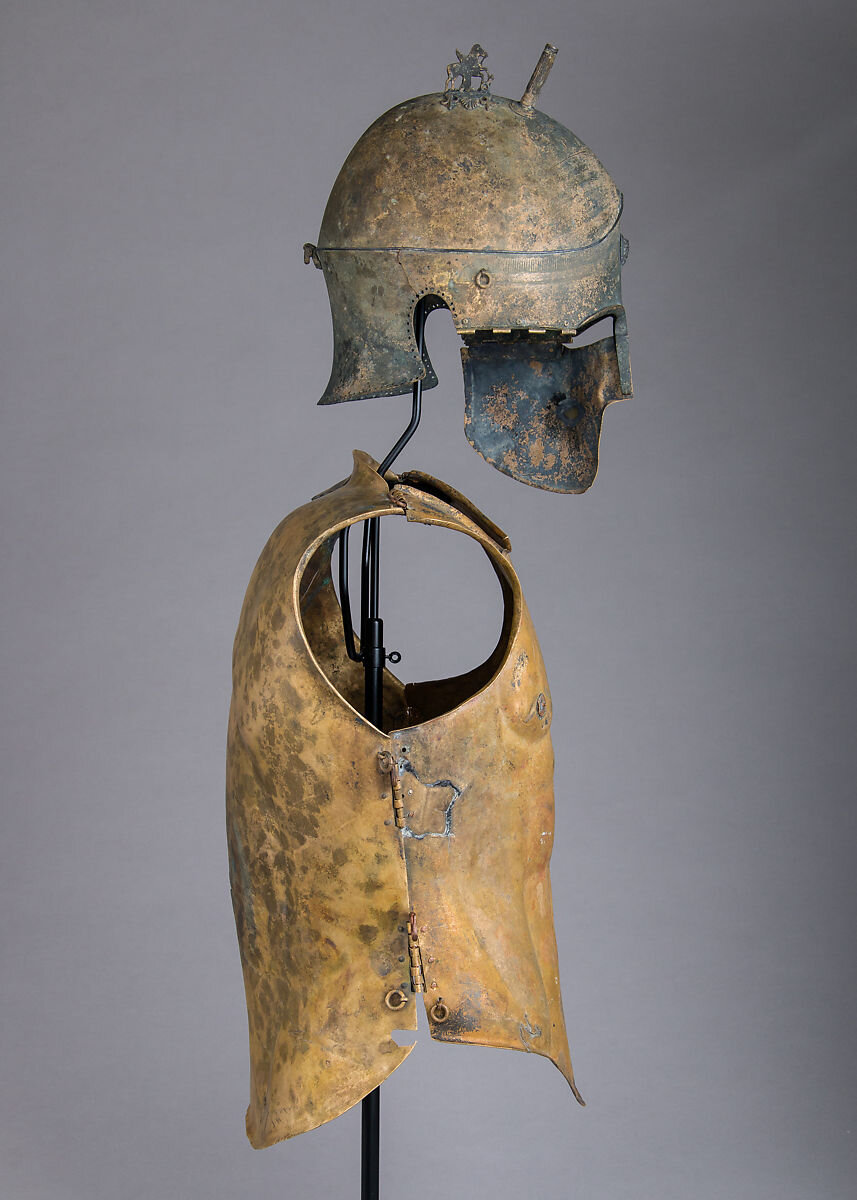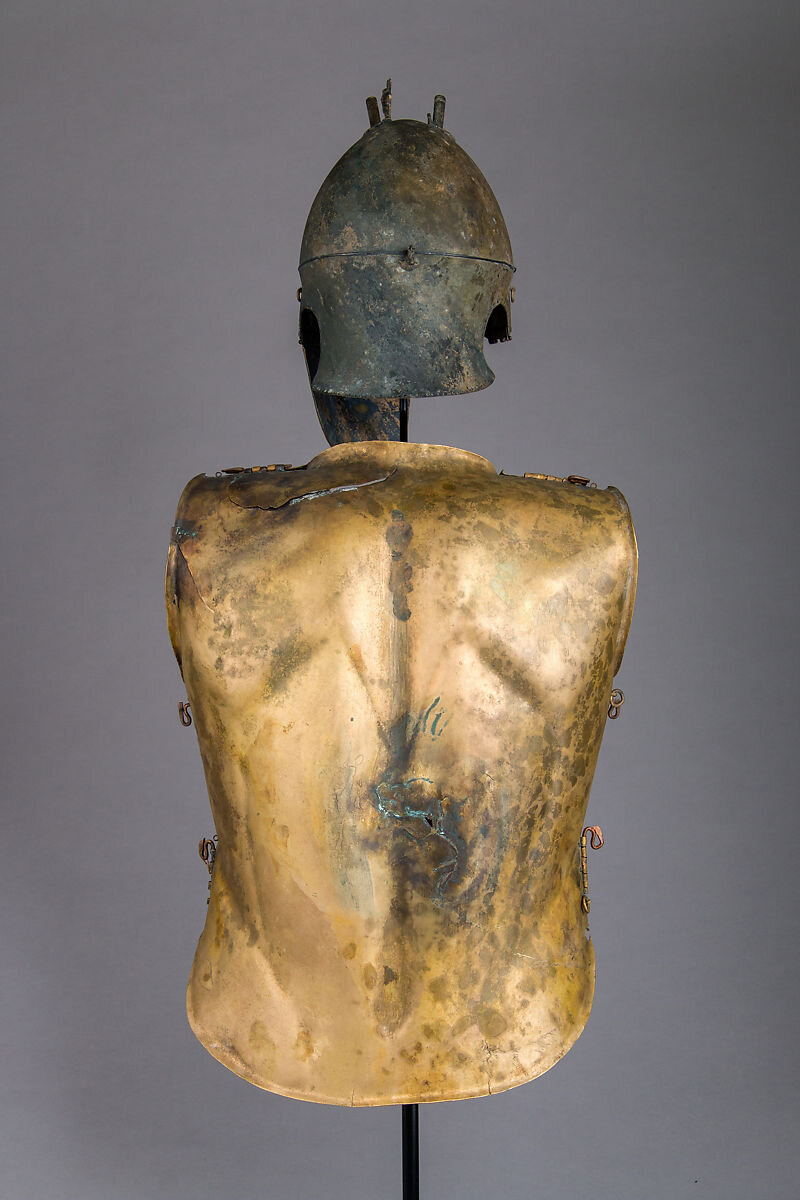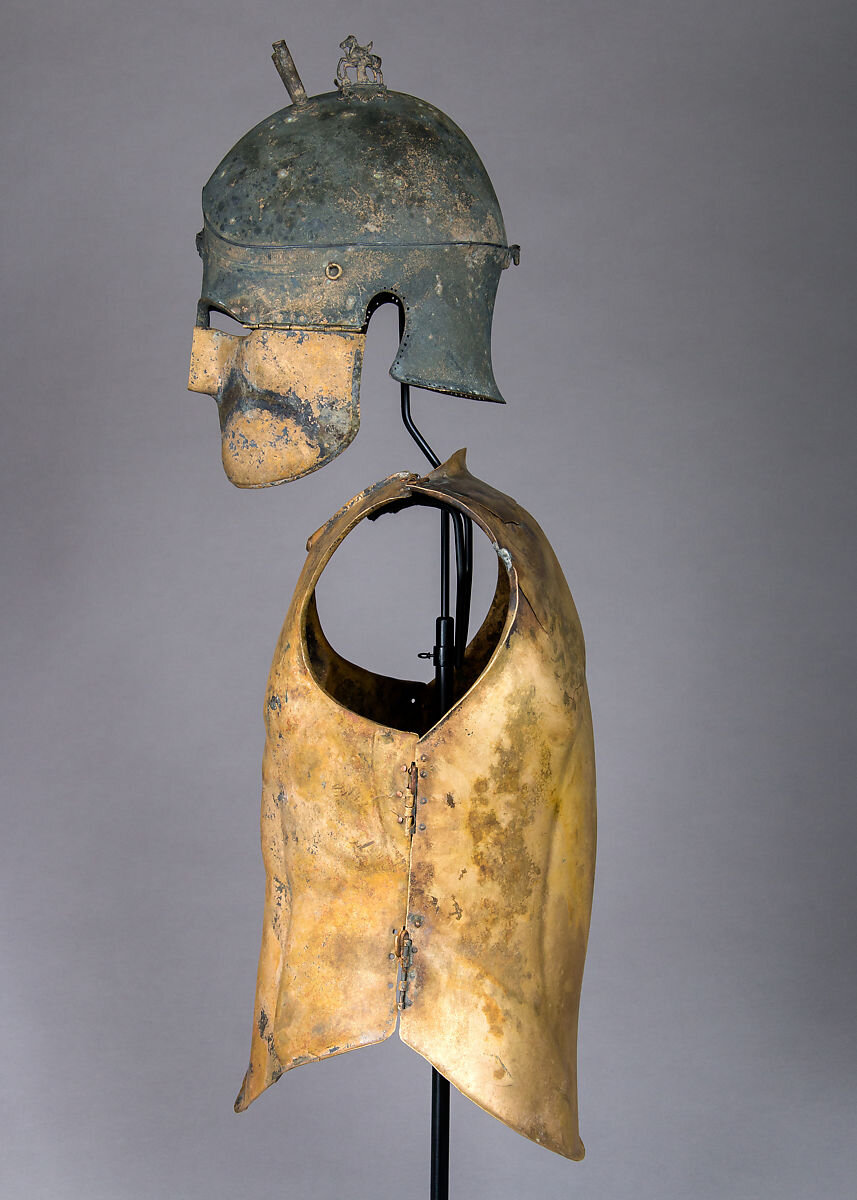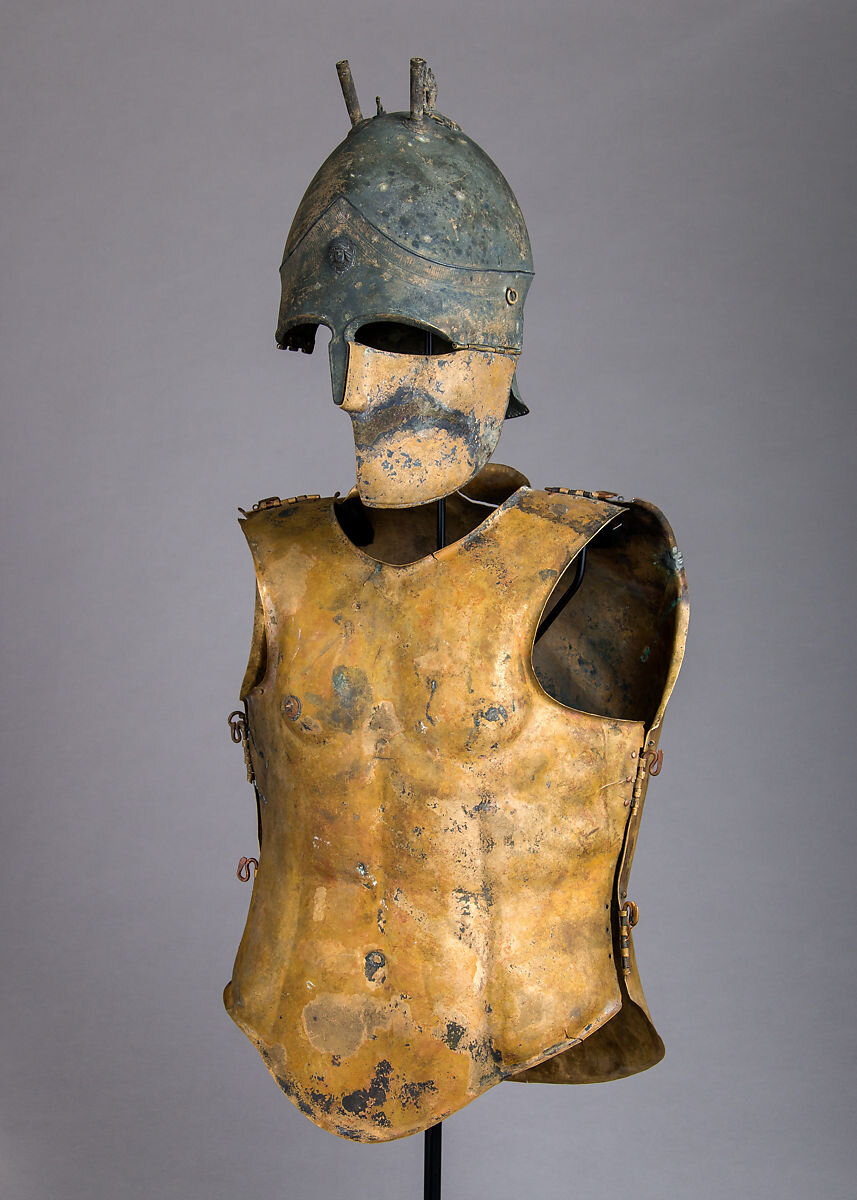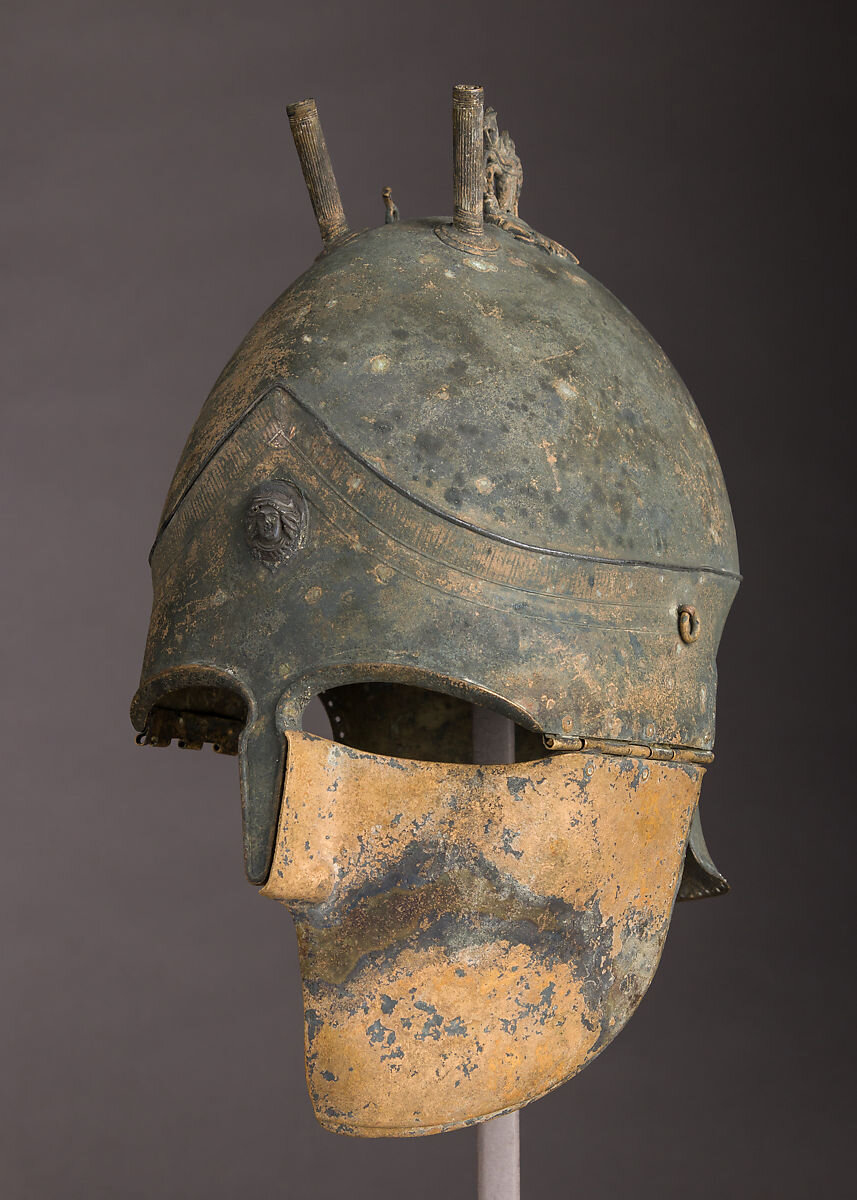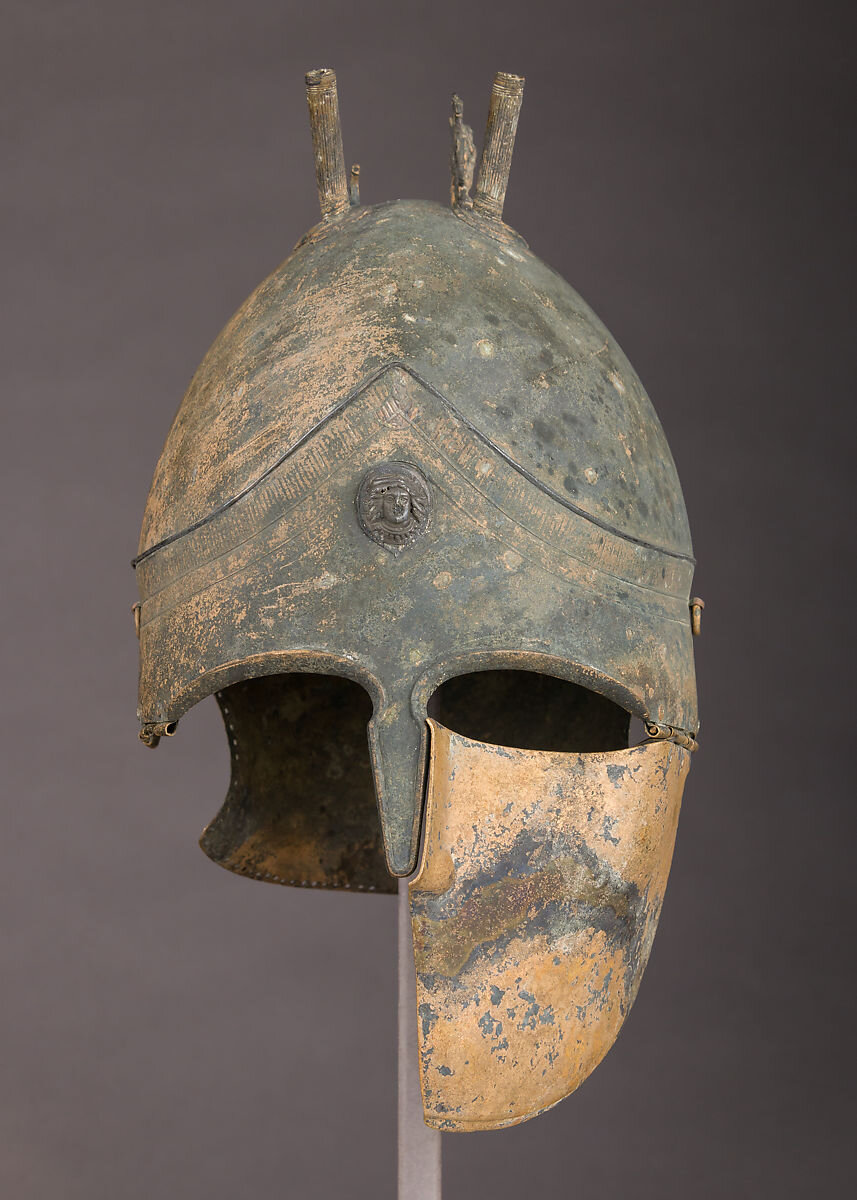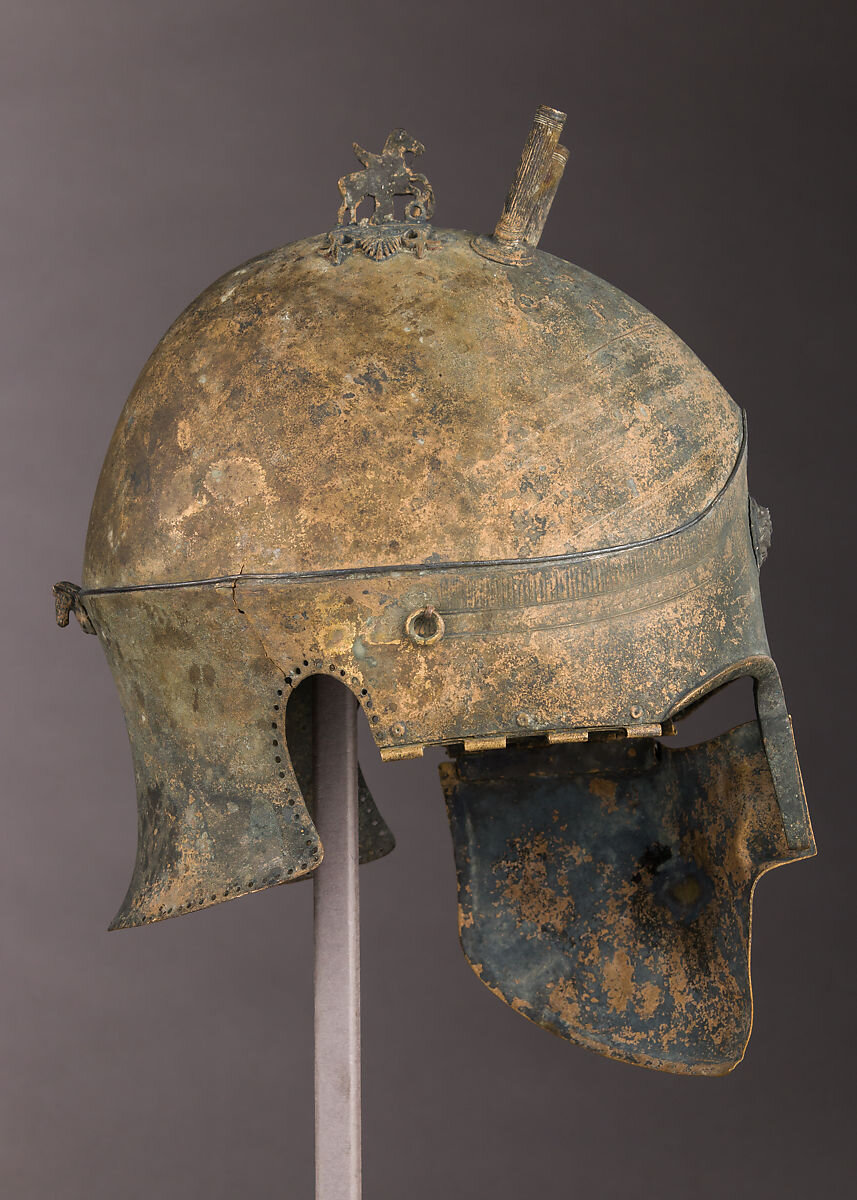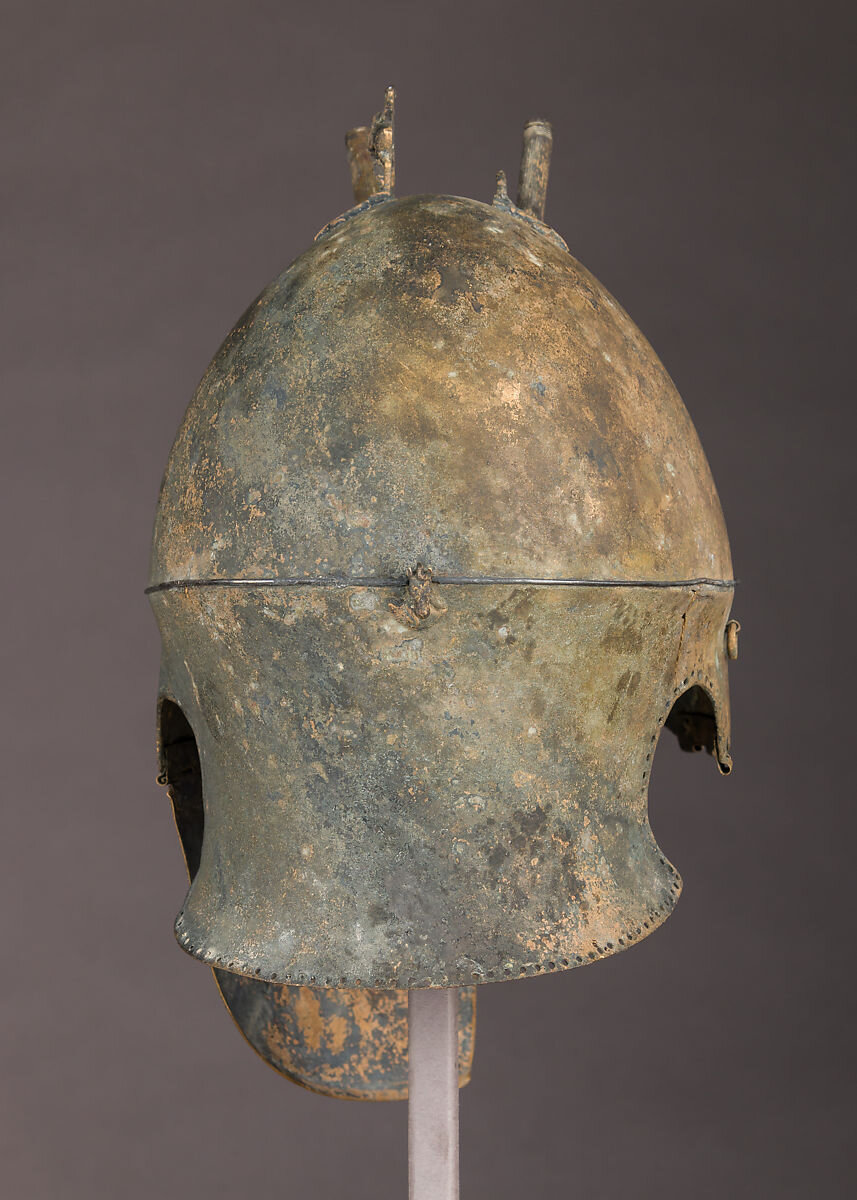The Corinthian helmet was depicted on more sculpture than any other helmet; it seems the Greeks romantically associated it with glory and the past. The Romans also revered it, from copies of Greek originals to sculpture of their own.
Bronze Corinthian helmet, 500 BC
Based on the sparse pictorial evidence of the republican Roman army, in Italy the Corinthian helmet evolved into a jockey-cap style helmet called the Italo-Corinthian, Etrusco-Corinthian or Apulo-Corinthian helmet, with the characteristic nose guard and eye slits becoming mere decorations on its face.
Helmet of the Italo-Chalcidian Type, Anatomical Cuirass, and Left Greavelate 5th–4th century B.C.
Given many Roman appropriations of ancient Greek ideas, this change was probably inspired by the "over the forehead" position common in Greek art. This helmet remained in use well into the 1st century AD.
This panoply comprises a matching ensemble of helmet, cuirass, and greave (shin guard), which are rare Etruscan works exemplifying the finest qualities of the form and decoration that characterize the greatest armors made in Etruria during the Classical period.
In addition to exhibiting originality of design and exceptional workmanship, this ensemble occupies an important place in the historical development of Etruscan armor. It includes one of the finest Etruscan cuirasses known to survive and a helmet that has no parallels in the Ancient World.
Very few Etruscan panoplies appear to have ever included anatomical cuirasses, and among the few specimen known to remain, many are extensively damaged or restored, unlike this example. The helmet, with its delicate embossed, chased, and engraved ornament, and its striking bronze and silver appliqués, is one of the most luxurious examples of a type found only in Etruria, and by far the best preserved representative of this exclusive group.
It is most important, however, for its unparalleled construction with hinged cheekpieces that would have completely enclosed the wearer's face, and for the subtle modeling of the corresponding plates to follow the contours of the nose, cheekbones, and jaw. No other helmet with comparable features is known to exist.




